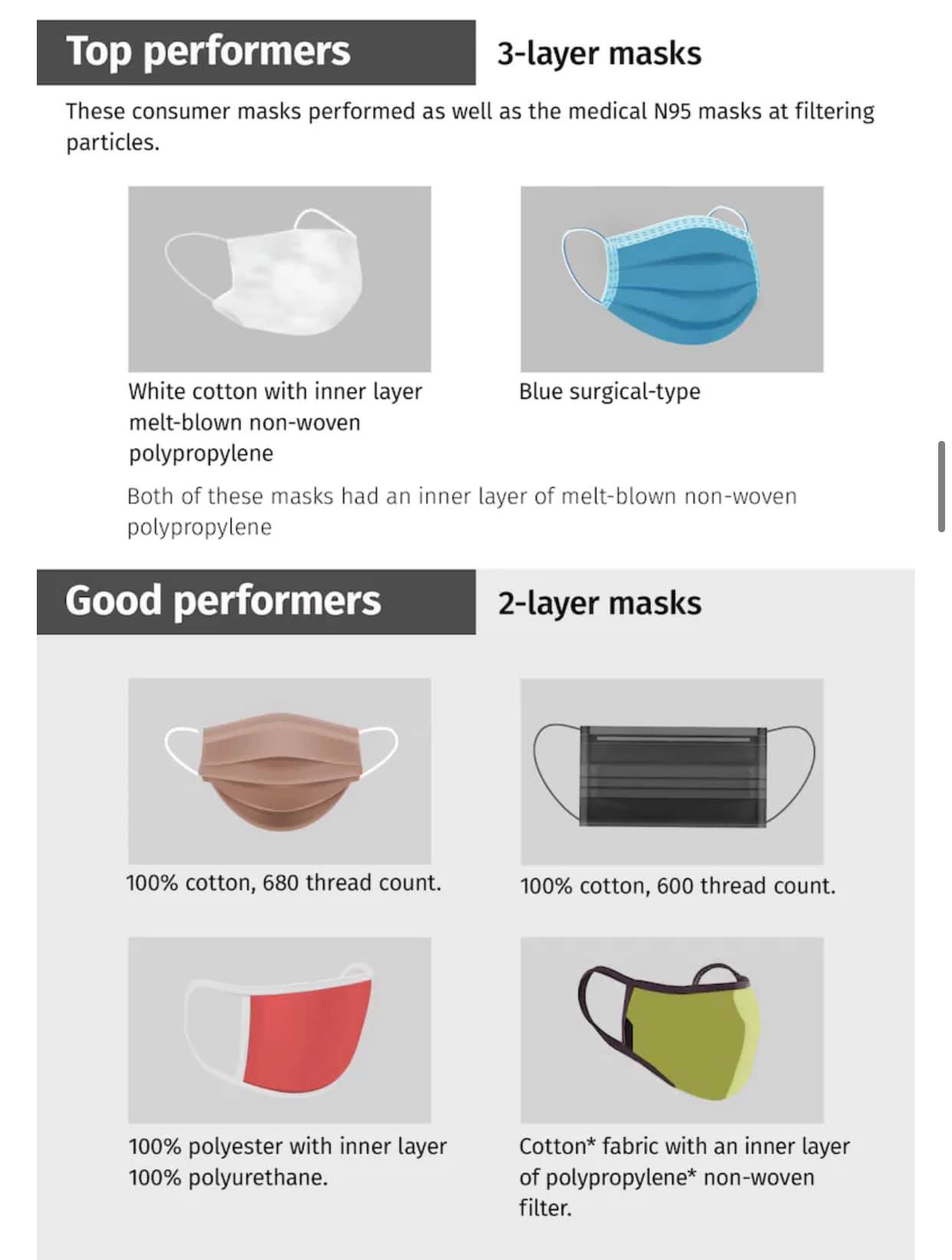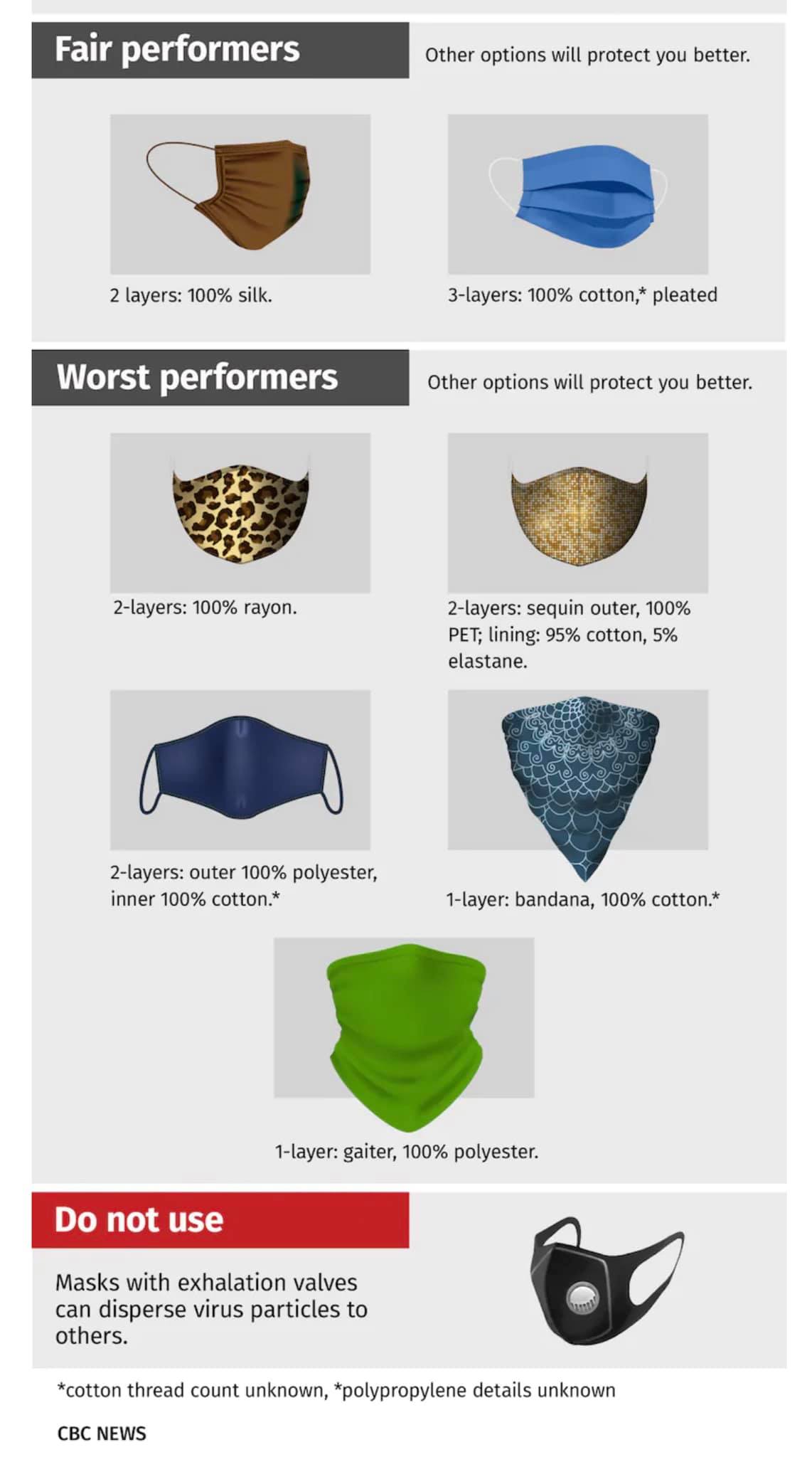Masks – Which ones work and which don’t?
James Scott, lead at the Occupational and Environmental Health team at the Dalla Lana School of Public Health in Toronto has an incredible lab where they test N95 masks for Health Canada.
This lab, in collaboration with CBC Marketplace, has subsequently done an excellent and in-depth analysis on a few different kinds of face covering and how each compares to an N95 in capturing both large as well as small particles.
They found:
A mask made with inner layer of melt-blown, non-woven polypropylene fabric and outer layers of cotton had filtration efficiency rates as high as an N95. The combination of multiple materials is what contributes to the strong result.
Blue three-ply surgical-type disposable masks also reported some of the highest filtration efficiency rates. Which is not surprising as these also contain melt-blown, non-woven polypropylene fabric.
Masks made with 600 and 680 thread count cotton had filtration efficiencies almost twice that of the other cotton masks tested. The tighter the weave, the better the filtration.
Surprisingly, more layers of cotton didn’t necessarily mean a better mask. The three-layer cotton mask tested did not perform well, but the two-layer cotton mask did. I messaged Dr James Scott for clarity, and he said it has more to do with the fabric in question being used – so it’s not that all 3-layers would perform poorly but this specific one did because of likely other factors playing a role.
Bottom line: The weave, fabric type, thread count, mixed materials etc all play a very important role – so select your mask wisely.
For full article, see here:
https://www.cbc.ca/amp/1.5795481


